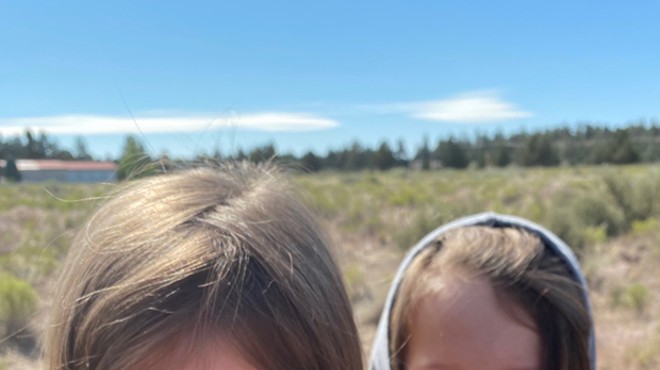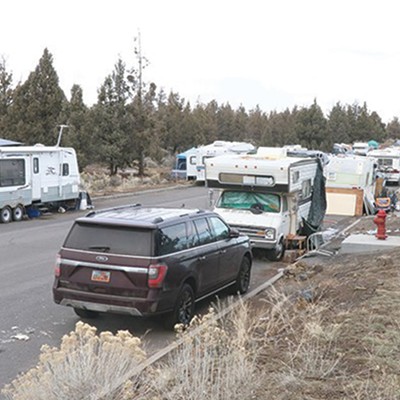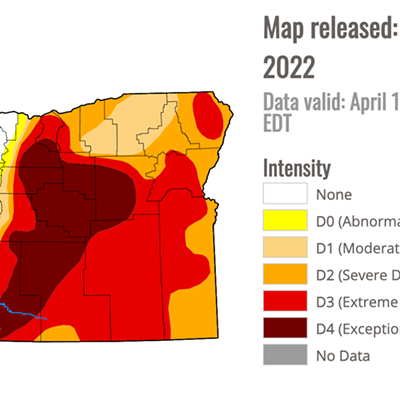Is the fear of being stung or bitten so bad that you're forsaking that fishing or camping trip to stay "safe" at home? Boy, I hope not!
Forget snakes and spiders, the most dangerous thing any of us can do today is drive your motor vehicle. The number of humans and pets killed by rattlesnakes or stung by bees and wasps is nothing compared to those who have been maimed and killed in motor vehicle mishaps.
In bringing up the subject of venomous animals and poisonous plants I am NOT trying to be a sensationalist, scare-monger, or a smart-alec, I'm just saying, "Hey, please wait a minute before you bash that bee, wasp, snake or stinging nettle."
I apologize for making you uncomfortable if you live in fear of being bitten by a snake or stung by a bee, but based on the wave of phone calls and emails coming my way, this must be the insect stinging season, and there must be a rattlesnake behind every bush.
Unfortunately, most of the scary stuff about bees, wasps and snakes is passed down from one generation to the next. It happened time and time again when I was conducting science programs and running camps with the Oregon Museum of Science and Industry; I'd run into a kid who couldn't even talk about stings and bites because of some horror story passed down from one generation to the next.
There is one thing everyone should realize right from the get-go, however. If you bother a bunch of bees you're asking for it. Yellow jackets do have a short fuse, and if they're having a bad day you can ruin yours if you get too close.
Still, if you are one of those unfortunate people who have a violent reaction to wasps and bee stings, then all this is inconsequential. You should never place yourself in the position to get stung, and if you accidentally do, you should have the tool(s) on your person to nullify what happens next.
So, what's this about "poison" versus "venom?"
To start with, "poison" comes from plants, while "venom" comes from animals. You can't get venom from stinging nettle, but you can get it from a stinging insect. There is no poison involved with a rattlesnake, unless it's been camping in poison ivy. Neither will you get any "poison" if it bites you, but you will have "venom" injected into some part of your tender body. If you end up in a doctor's care, he or she will treat you for a "venomous bite." If you fall into a patch of poison ivy the treatment will be for just that, "poison."
Bitten by a Rattlesnake? Here's What to Do
I'll be the first to admit, a rattlesnake can—at times—strike first and rattle next, but it's extremely rare. The best first aid is first to know that you're in rattlesnake country. Reaching into a big sagebrush—without looking first—for a rare agate or opal in Wasco, parts of Deschutes, Lake, Jefferson or Harney Counties may not be the smartest move.
If you're going into rattlesnake country, do an online search for "rattlesnake first aid kit." They're available from 21 to 270 bucks. Take your pick and follow the directions!
If you're bitten by a rattlesnake, please don't go at that old "cut-and-suck" routine. Your mouth is a cesspool and the chances for secondary infection are wonderful. The first and most important thing to do is to sit down and stay calm. (Oh yeah, as if you can stay calm right after you've just been injected with rattlesnake venom...) But above all, don't run around shouting, "I've been bitten by a rattlesnake, I've been bitten by a rattlesnake!" That behavior can kill you.
First, make sure you've actually been bitten. Are there fang marks? Is there any blood? Is it yours? Is there any real pain? Where's the snake? If you've been bitten on the hand, remove your watch and rings. Position yourself so that the bite is at or below the level of your heart. If you have to be transported in your vehicle to get to medical help, make sure you're comfortable and calm, with the bitten area below your heart and resting on something, not just dangling.
Way back in the late '70s I was the manager of Ramey Canyon Preserve in Southeast Arizona, aka The Hummingbird Capitol of the World. My son, Dean, 16 at the time, often led nature hikes into the upper part of the preserve. One day he was bitten by a little twin-spotted rattlesnake (or was it a rock rattlesnake, I can't remember...). When I arrived to see how he was doing, he was sitting next to Ramey Creek, his hand in the cold water. Grinning at me, he said, "Sorry, pop."
Spider Hawks: Be Sure to Give Way
But of all the animals and insects we share space with on this beautiful planet Earth, the one I give a lot of room to is the female spider hawk—a wasp with an attitude. I've never been stung by one of those beautiful gals, but I have chatted with a fellow who has, and his was a horror story out of Hollywood.
The pain, according to him, caused him to pass out. He said it was like someone had pushed a red-hot needle into his hand, then hit it with a hammer. That's the reason I illustrated this piece with (one of) our local spider hawks. If you blunder into a confrontation with a female spider hawk—and get stung—what you get from a yellow jacket will feel like a friendly pat on the back.
In closing, yes we do have scorpions here. Most are the Mordant scorpion, but none of them pack the wallop offered by the little green Centruroides of the southwest U.S. But even at that, there hasn't been a fatality from a scorpion sting in Arizona for over 40 years. When it comes to spiders, the only native spider we have that can cause you harm is the female black widow.



























